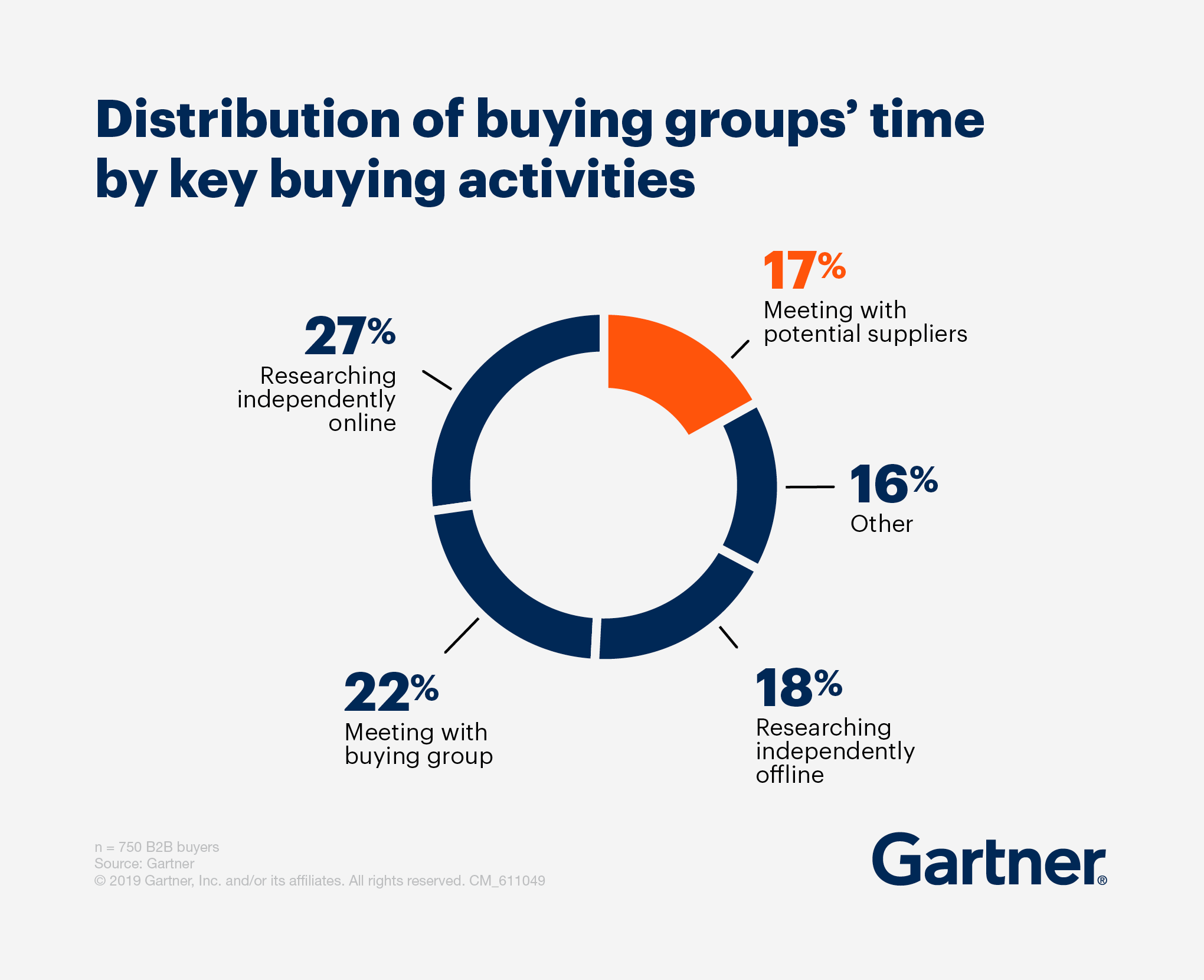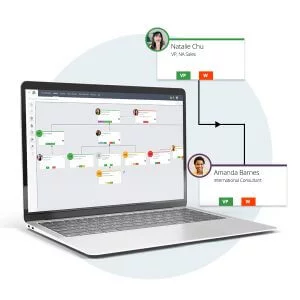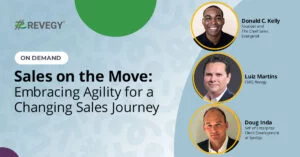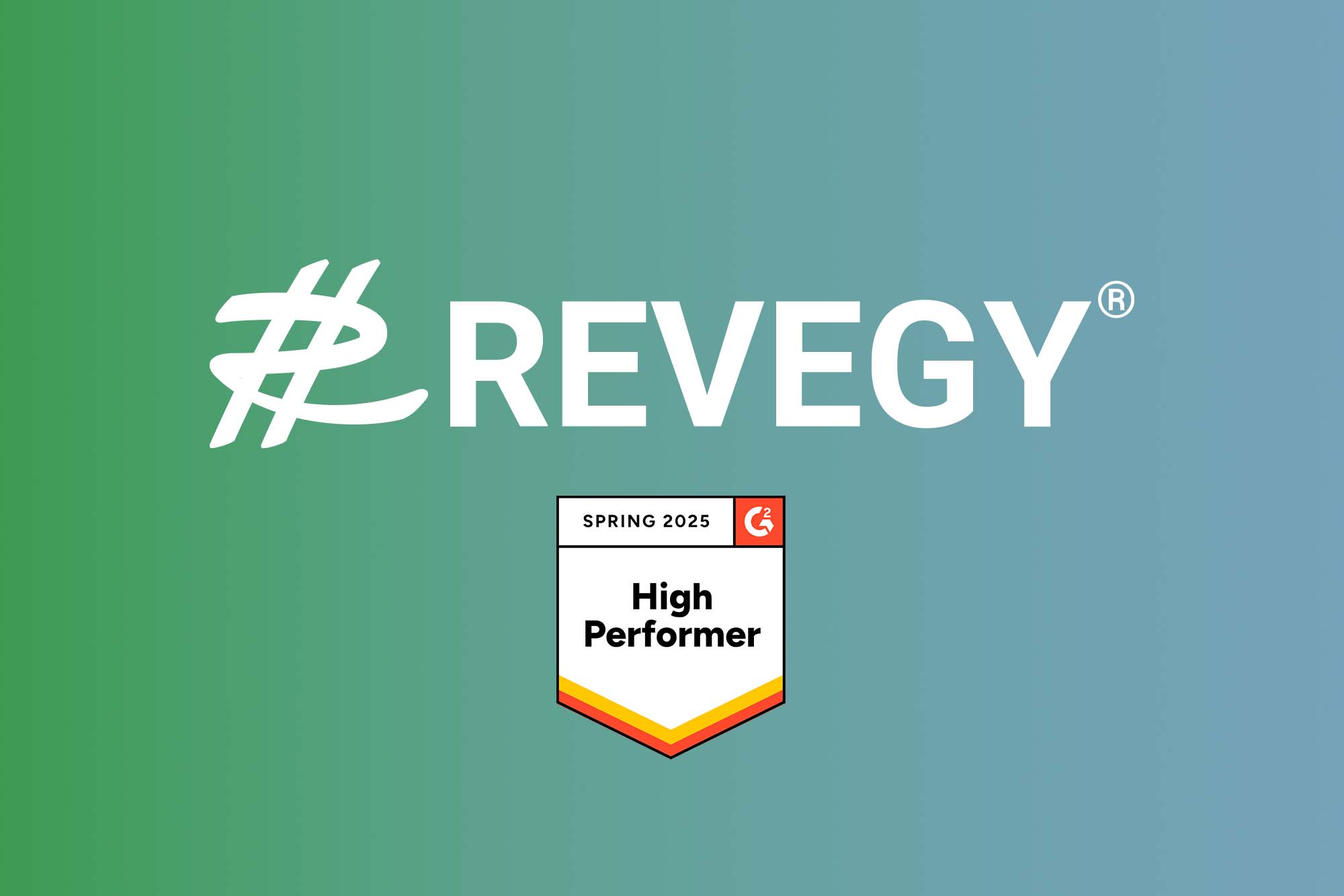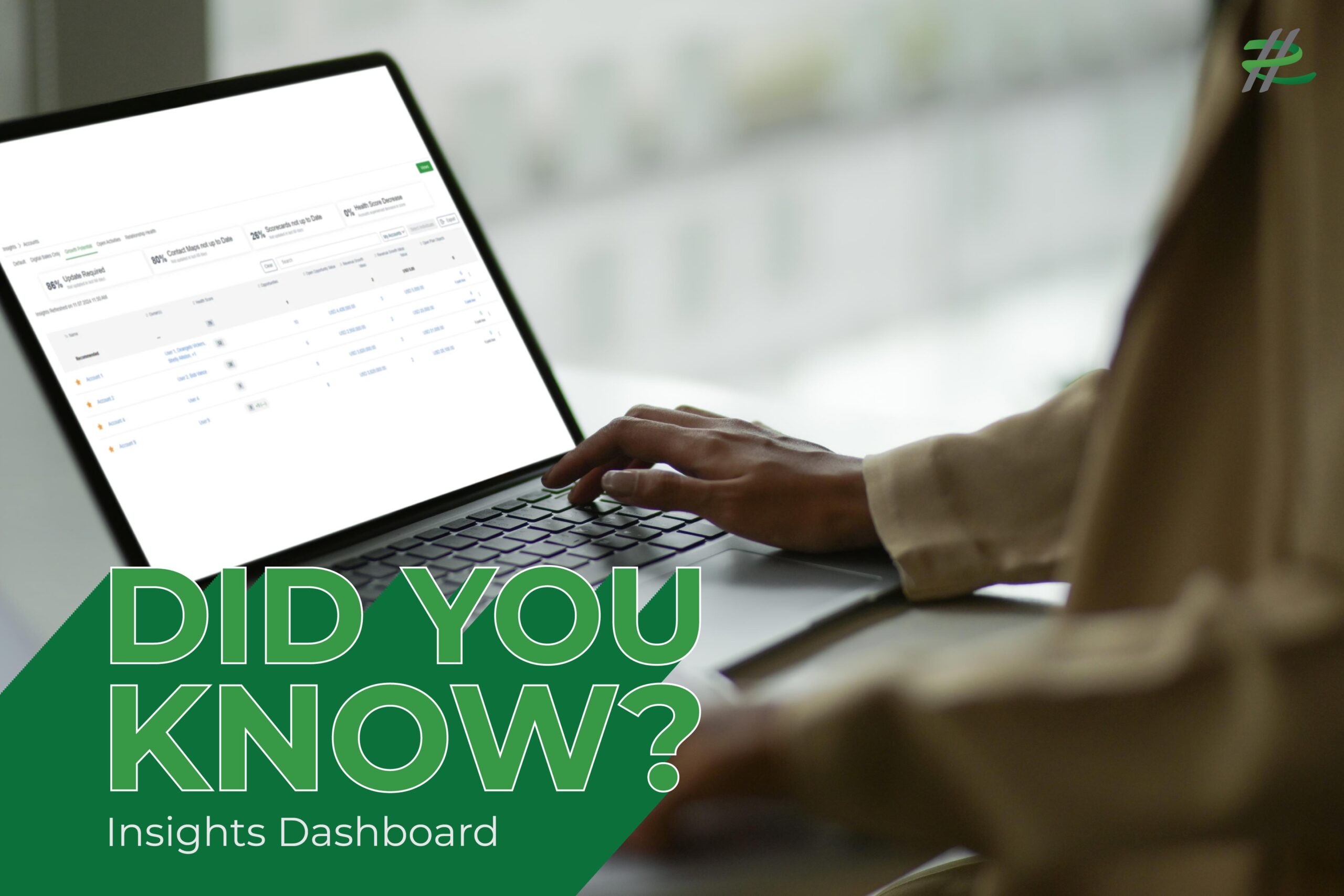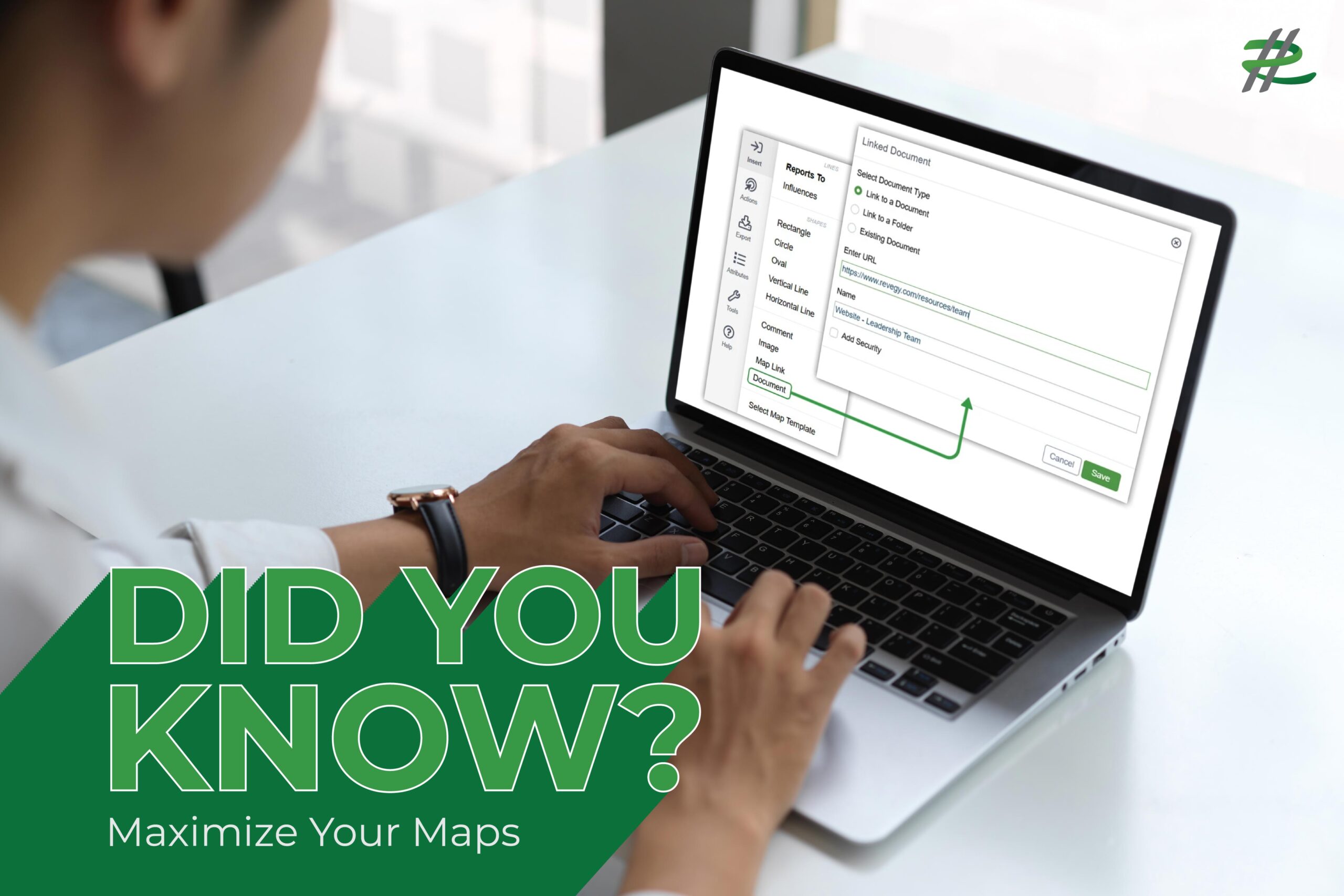A recent study by CEB found that the average buying group size has doubled in the past few years. This means that sales teams are now engaging with more stakeholders than ever during the sales process…
The rising number of stakeholders adds complexity to the sales process. It demands a new approach to engaging with accounts and aligning products and services with diverse priorities within buying groups.
This blog will delve into the importance of these changing buying group dynamics and share strategies to help salespeople thrive in this new era. Let’s get started.
What are Buying Groups?
In B2B sales, a buying group comprises all the internal stakeholders, including champions, influencers, and decision-makers, in purchasing a service or product. Members of buying groups have different goals and interests. For example, some may be the product’s end-user, while others may be responsible for the budget.
In traditional sales approaches, the focus was primarily on building relationships with individual decision-makers, often at the executive level. However, modern B2B buying processes have become more complex, with multiple participants and many online research tools, paving the way for various stakeholders to research products and services before even speaking with a sales representative.
The Shifting Dynamics of Buying Groups
As the business landscape continues to grow and evolve, the dynamics of buying groups are undergoing significant shifts. This section will look at these changing dynamics.
1. Increasing Size and Complexity of Buying Groups
Over the past decade, the average buying group has expanded. Statistics from Gartner indicate that the average buying group size now ranges from 6 to 10 individuals. Sometimes, it can involve even more significant numbers, up to 15 to 16.
This rise in stakeholder size makes sales operations more complex. Identifying, coordinating, communicating, and engaging with a large buying group requires more time and resources. Sales teams must navigate diverse perspectives, varying priorities, and individual stakeholder motivations within the group.
2. Rise in Stakeholder Involvement
Along with growing group size, there is a notable increase in stakeholder involvement. In today’s buying landscape, decision-making is rarely confined to an individual or department. Instead, it involves cross-functional teams from different departments/locations.
Each stakeholder brings unique perspectives, priorities, and objectives, creating a complex evaluation process. Sales professionals must recognize and address these varied, sometimes conflicting perspectives to mitigate the risk of misalignment. They must map the solution’s features and benefits with the specific needs of each stakeholder to move the buying process forward.
3. Buyers Are Further Along in the Buying Journey
Another key shift in the behavior of buying groups is that they are increasingly well-informed. Most decision-makers are advanced in their buying journey before engaging with salespeople.
Research by Gartner reveals that buyers spend a significant portion of their evaluation time researching online. So, by the time they are ready to speak with a salesperson, they have already progressed in their decision-making process.
This presents both a challenge and a sales opportunity for sales reps. It means leads are qualified by the time they reach a sales rep, and therefore the rep can spend time focused on providing value instead of qualification. However, because the buyers are well educated, reps must adapt their sales and pre-sales strategies to meet the buying group’s needs, address specific problems, and guide buyers to a favorable buying decision.
4. Buyer Groups are Biased Towards Known Sellers
Trust is a significant factor for the buying group when deciding whether to buy from a particular seller. Buying from a seller with an established relationship with the buying group simplifies and accelerates the process. It reduces the perceived risk of purchasing from an unknown seller.
Gartner research shows that buyer groups spend as little as 17% of the total buying time meeting with potential sellers. When analyzing and comparing suppliers, the time spent with one sales rep can be as little as 5%. This means that new sellers have minimal time to build a relationship with the buying group and bring them to closure.
Challenges for Salespeople
With the dynamics of buying groups evolving constantly, salespeople face challenges. In this section, we will explore some of the hurdles:
Competing Priorities within Buying Groups
Buying groups include people from various departments and functions within an organization, and each stakeholder has their priorities and key performance indicators (KPIs). For instance, a mid-level sales leader may prioritize revenue growth.
Meanwhile, a sales enablement team may focus on improving sales operations productivity. In B2B organizations, the buying process usually involves three or more departments. This underlines the increasing complexity of buying groups.
These competing priorities can lead to divergent perspectives and create potential roadblocks during the evaluation stage of a sales cycle. Sales professionals must address these competing priorities and find common ground, presenting how the solution aligns with each stakeholder’s objectives.
Lack of Alignment Among Different Stakeholders
Aligning stakeholders within a buying group is critical to closing a deal. However, aligning stakeholders with varying objectives can be a challenge. For instance, the sales team’s expectations may differ from those of the marketing or revenue operations teams.
Sales professionals must initiate conversations and provide insights that bridge the gaps and achieve alignment among stakeholders, verifying each stakeholder feels:
- Their pain points have been addressed
- The value proposition is meaningful
- The solution aligns with their goals
By doing this, sales professionals can create harmony and move the buying process forward.
Long Buying Cycles
As the buying landscape has become more complex, the length of the buying cycle has significantly increased. According to Close, the average buying or evaluation sales cycle can span between 6 – 18 months. However, the actual sales cycle may be considerably shorter.
This extended sales cycle means buyers spend lots of time researching and evaluating potential solutions before approaching salespeople. Therefore, sales professionals must adapt strategies to provide value throughout this extended buying journey, remaining engaged and building relationships to understand the buyer’s needs, challenges, and motivations.
Strategies for Sales Success
1. Contact Mapping: Uncovering Buying Group Dynamics
Mapping contacts within buying groups is critical to simplifying the complexities of the sales process. Look at the account and identify those with whom you have interacted and those with whom you have yet to meet. By leveraging sales execution software and collaborating with your marketing team, it’s easy to map the diverse personas within the organization.
Understanding influence dynamics inside the organization is equally important. For example, if you identify the CFO as an “influencer” in the buying decision, you can frame offers that appeal to the CFO and showcase ROI metrics that the CFO deems priorities.
Revegy’s relationship mapping is a powerful tool for enabling collaboration with marketing teams to identify known and unknown personas in buying groups and uncover influence dynamics. Furthermore, by taking advantage of Revegy’s integration capabilities, sales, marketing, and CX can align their efforts and develop targeted sales strategies that resonate with each stakeholder’s unique needs and motivations, tailoring their messaging and value proposition to individual motivations.
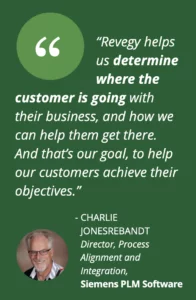
Furthermore, Revegy’s account plan summaries enabled the sales team to track and measure how Siemens PLM Software supported customers in hitting their goals, augmenting value propositions, and paving the way to upsell and cross-sell opportunities.
2. Stakeholder Insights: Understanding Motivations
Understanding the unique motivations of stakeholders is critical when marketing and selling to buying groups. This first requires thorough research—investor relationship materials, press releases, and company posts on platforms like LinkedIn so sales professionals understand the organization’s goals.
Building a strategy map is a valuable exercise, outlining the organization’s goals, identifying the roadblocks to these goals, highlighting the tactical steps needed to overcome the roadblocks, and identifying the specific stakeholders in each of the steps.
Revegy’s Strategy Maps enable sales teams to organize and synthesize this information. In addition, Revegy’s stakeholder insights feature provides research techniques and tools to gain deep insights into stakeholders’ roles and objectives. Featuring easy integrations with external data sources, sales reps can leverage Revegy to analyze critical information and uncover valuable insights, enabling them to position themselves as ideal partners who understand the organization.
3. Mutual Planning: Collaborative Strategies for Success
Having identified the stakeholders and their motivations, the next step is to create a plan for effective engagement. This plan, known as a mutual close plan or joint evaluation plan, is made in collaboration with the purchasing stakeholders and the solution’s “champion” within the organization.
A crucial qualification exercise is to evaluate the buyer’s willingness to participate in planning. By sharing the sales process and discussing key steps, the plan brings clarity to both sides, and the sales rep can gauge how “ripe” the opportunity is.
Revegy’s mutual planning feature empowers sales professionals to build collaborative, transparent relationships with stakeholders that outline key milestones, action items, and timelines. Also, Revegy enables sales professionals to address potential risks and barriers early. Sales professionals can use Revegy’s risk assessment tools to identify obstacles and work with stakeholders to develop solutions. This removes surprises and increases the sales rep’s credibility.
This blog has delved into the importance of these changing buying group dynamics and shared strategies to help salespeople thrive in this new era. Now, let’s take this a step further and explore how sales professionals can master these intricate dynamics by applying various proven sales methodology techniques.
Mastering Buying Group Dynamics with Various Sales Methodology Techniques
In the ever-evolving landscape of B2B sales, navigating buying group dynamics has become more complex than ever. To address this challenge, sales professionals can leverage established sales methodology techniques to effectively engage with stakeholders and align their strategies. In this section, we’ll explore how different sales methodology techniques can be applied to master the intricacies of buying group dynamics.
Exploring Different Sales Methodologies and Techniques
Solution Selling: Solving Stakeholder Puzzles
Solution Selling, a popular sales methodology, revolves around actionable steps in understanding customer pain points and tailoring solutions to meet their needs. In the context of buying groups, Solution Selling encourages salespeople to identify and address the varied challenges and priorities of individual stakeholders. By focusing on presenting solutions that resonate with each stakeholder’s specific requirements, this sales methodology enhances alignment and engagement across the buying group.
Challenger Sales: Provoking Positive Disruption
Challenger Sales Methodology, another effective sales methodology, emphasizes challenging customers’ preconceptions and guiding them to new insights. Within buying groups, this sales methodology encourages salespeople to challenge the status quo and introduce innovative perspectives. By leveraging educational and thought-provoking content, sales professionals can stand out in the buying process and stimulate meaningful conversations that resonate with diverse stakeholders.
SPIN Selling: Uncovering Nuanced Needs
SPIN Selling, a renowned sales methodology, centers on four types of questions: Situation, Problem, Implication, and Need-Payoff. Applying SPIN Selling to buying groups involves systematically uncovering the unique situations and problems faced by each stakeholder. By exploring the implications of these challenges and demonstrating how solutions fulfill specific needs, this sales methodology can build alignment and address individual motivations effectively.
Consultative Selling: Guiding with Expertise
Consultative Selling, a trusted sales methodology, positions salespeople as consultants rather than just vendors. In the context of buying groups, this approach involves providing expert guidance and insights tailored to each stakeholder’s role and objectives. By becoming a valuable resource, sales professionals can navigate the complexity of buying groups with strategic recommendations that cater to diverse needs.
Tailoring Approaches to Buying Group Dynamics with Sales Methodology
Strategic Sales Method Application: Choosing the Right Fit
Selecting the most suitable sales methodology depends on the nature of the buying group, the complexity of the solution, and the sales team’s strengths. While Solution Selling might excel in aligning diverse stakeholder needs, Challenger Sales could stand out when differentiation is crucial. SPIN Selling’s question-based approach can uncover nuanced needs, and Consultative Selling offers a personalized, advisory touch.
Flexibility: Adapting for Success with Sales Methodology
In reality, the sales landscape rarely fits into a single sales methodology. Successful sales professionals often blend aspects of multiple methodologies to create a hybrid approach that best suits the dynamics of buying groups they enc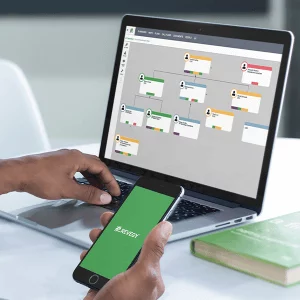
Navigating Buying Group Dynamics with Sales Methodology Versatility
No matter the sales method you choose, mastering the challenges posed by buying group dynamics requires a versatile approach. By understanding and applying various sales methodology techniques such as Solution Selling, Challenger Sales, SPIN Selling, and Consultative Selling, sales professionals can strategically engage with stakeholders, build alignment, and drive successful outcomes in today’s intricate B2B sales environment. Experimentation and a willingness to evolve methods will empower sales teams to thrive in the evolving world of buying groups with the right sales methodology.
Empowering Sales Teams to Thrive in Changing Buying Groups with Sales Methodology
Revegy’s powerful features, including contact mapping, stakeholder insights, and mutual planning, help sales professionals navigate the complexity of today’s buying groups. By leveraging Revegy’s capabilities and the right sales methodology, sales teams can understand the dynamics of buying groups, tailor their approach to individual stakeholders’ motivations, and build strategies for success. Request a demo of Revegy today and unlock the secret to sales.
Schedule a Demo Below
Now On Demand!
“Sales on the Move: Embracing Agility for a Changing Sales Journey.”
Watch our on-demand webinar, where we delve into the key elements of an agile sales approach from start to finish, featuring Luiz Martins, CMO of Revegy, along with esteemed guest speakers Donald C Kelly, Founder and The Sales Evangelist, and Doug Inda, SVP of Enterprise Client Development at Syndigo. Discover how to adapt to tighter budgets without compromising sales performance, leverage technology to streamline processes and close more deals, provide meaningful value to buyers amidst abundant data, succeed in a remote sales environment with effective communication and virtual presentations, and position yourself as a trusted advisor in today’s ever-changing sales landscape. This is your chance to increase your pipeline and propel your success forward. Watch on-demand here!
References:
https://una.com/resources/article/buying-group-vs-group-purchasing-organization/
https://easytravelpoints.com/buying-groups/
https://enable.com/blog/the-purchasing-power-of-a-buying-group


